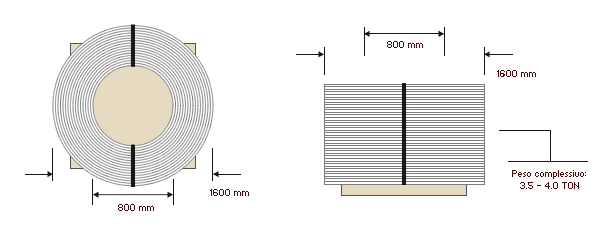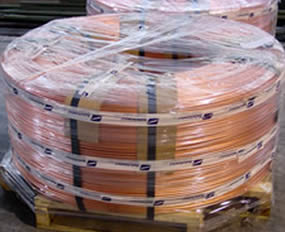The OFHC copper wire rod produced by Copper Italia is a single-phase material as it does not contain oxides and therefore it is greatly more ductile and workable than normal ETP wire rod.
Thanks to the high capacity of the melting furnace and the hold time of the molten copper (characteristics universally recognised in the industry as prerequisites for the production of premium quality wire rod), the level of oxygen in our wire rod is maximum 1-2 ppm. A small amount of oxygen results in few imperfections in the internal structure of the wire rod. Higher levels of oxygen, i.e. greater than 4 ppm, may cause problems in downstream manufacturing processes.
Our fully automated control at all stages of the process ensures a marked step forward in terms of both quality and reliability compared to all previous production technologies of copper wire rod.
DATA SHEET – CHARACTERISTICS OF THE OFHC COPPER ANODE.
OFHC Copper is the only one produced following a completely oxygen-free process. It meets ASTM B 170 standards and was initially developed to meet the particular needs of modern industrialisation.
The production of OFHC copper (see table) ) starts with the selection of copper cathodes of a high level of quality and purity, which are melted in an induction oxygen-free atmosphere where any oxygen residual traces on the cathodes are eliminated.
The molten copper obtained is then poured in a holding furnace via a duct in a completely oxygen-free atmosphere, thanks to the gaseous components that prevent contamination. This process also prevents the inclusion of any potentially harmful components in the holding furnace from where the wire rod is then extracted.
COARSE GRAIN STRUCTURE HELPS PREVENT ROUGHNESS AND ENSURE EVEN COATING.
In copper, like in other metals, oxidation and other impurities can be revealed by analysing the grain structure. The impurities are subject to etching by plating solutions. Small particles of undissolved impurities can cause roughness, whereas the purity and structure of OFHC copper ensures a compact structure with an impurity-free smooth surface.
THE ABSENCE OF ADDITIVES MAKES GALVANIC BATHS MORE EFFICIENT.
Since no de-oxidising agents or additives are used in the production of OFHC copper, there are noresidual contaminants. In electroplating terms, this means a virtually total elimination of insoluble particles in the bath.
LESS RESIDUE MEANS LESS NEED FOR CLEANING THE PLATING VATS.
The use of OFHC copper results in less residue in the plating vats. The absence of oxides (not detectable by ASTM microscopic tests), combined with the extremely low level of impurities, contribute to minimize the amount of residue present in the bath.
|
|||||||||||||||||||||||||||||||||
|
|||||||||||||||||||||||||||||||||
|
||||||||||||||||||||||||||||||||||||||||||
|
|
|||||||||||||||
|
DATA SHEET – CHEMICAL AND PHYSICAL PROPERTIES OF OFHC WIRE ROD.
The chemical and physical properties of our OFHC wire rod are shown in the table below.
|
|||||||||||||||||||||||||||||||||
|
|||||||||||||||||||||||||||||||||
DATA SHEET – QUALITY STANDARDS
Our products meet the following international standards.
|
||||||||||||||||||||||||||||
|
||||||||||||||||||||||||||||
DATA SHEET: PACKAGING USED FOR OFHC WIRE ROD.
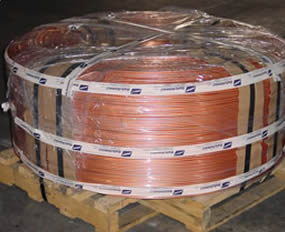
OFHC copper wire rod comes in the following packaging, depending on the wire rod diameter:
18mm coils
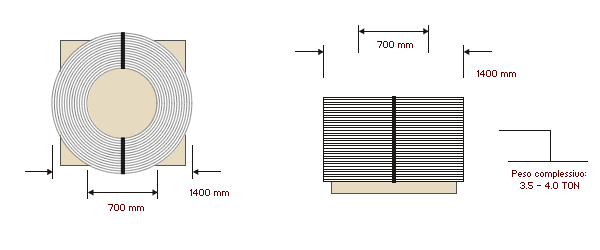
16mm coils
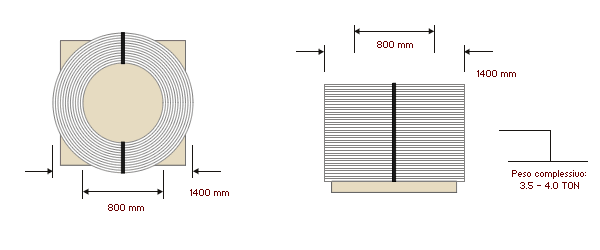
20mm coils
